
Even before my plane touched down at Tallinn airport, i knew that this year’s Estonian Music Days was going to feel a bit different. Last year marked the 20th anniversary of Estonia’s independence from Soviet occupation, and one of the effects of Russia’s ongoing war against Ukraine is that Tallinn was festooned with flags, signs, badges and other indications of the country’s absolute support and solidarity with the Ukrainian people. It would be going too far to say that the war overshadowed the festival, but it was impossible not to be reminded – every day, at every event – of how relatively recently it was that Estonia had had to steel itself against the outrage of mindless Russian aggression.
As if to underline the point, while walking down one of Tallinn’s most famous cultural back streets, Katariina Käik, a man began to talk to me in a language that was clearly not Estonian. After a minute or so of mutual gestures, guesswork and Google Translate it transpired that he was a Ukrainian. i opened my jacket to show the Ukrainian flag badge i was wearing, whereupon he warmly shook my hand, before taking out his phone and showing me a photograph dated 22 April, of a large apartment block, completely destroyed. It was his home. Even writing those words now i’m struck by the same amazement, horror and disbelief i felt at the time, that here was a man who less than a week earlier had had a house and a life, both of which were now in ruins. If i understood him correctly he was now in Tallinn looking for work (he kept saying what sounded like “робітний” – work – a word i have to confess i only know due to being a fan of Kraftwerk). At no point in our exchange did i see anything that approximated to a recognisable emotion on his face – yet i can only imagine the reality of what he must have been going through. Feeling incredibly helpless, as we parted i slightly desperately exclaimed “Slava Ukraini!”, to which he grunted clear but curt agreement, before heading off down the street. It’s a meeting i’ll never forget, suddenly making the war real and tangible, no longer a series of news stories about terrible things going on ‘over there’ but a systematic act of destruction inflicting catastrophe on people in the streets around me.
It was all too fitting, therefore, that the theme for the 2022 Estonian Music Days was ‘Teisiti’ – Upside Down – posing the questions “Why do we do things how we do them? Could we do anything differently, and if so, what? […] And when life is suddenly turned upside down, unexpectedly and irrevocably – what do we do, feel and think then?” It’s a theme no doubt partly inspired by the way the pandemic turned the world on its head, in addition to the need to fundamentally rethink our global approach to living in the midst of climate change, but which felt just as appropriate considering the devastating effects of conflict. As is usually the case with this festival, the theme was less a clear, tangible presence running through each concert than a vague underlying suggestion that, depending on your preference, could either be actively considered or (as in my case) for the most part forgotten about completely.
A notable exception was the concert given on Monday by EMA, the Ensemble of the Estonian Electronic Music Society, an occasion that didn’t just overturn conceptions about Estonian music but impinged on electronic and experimental music history more generally. Though presented as a performance, the concert was also an opportunity to showcase some startling discoveries found while researching the archive of musical materials currently languishing uncatalogued in the vaults of the Estonian Theatre and Music Museum. One came in the form of a wax cylinder, its contents a world away from the wavering songs and clipped speech usually associated with this ancient format. Instead we experienced two minutes of highly energised whoops, hollers and vocal high jinks that in no way sounded like they (presumably) originated the best part of a century ago. This was complemented by some transparent plastic records, possibly dating from the mid-1960s, filled with rudimentary blurts and noise. Incoherent and inchoate, chaotic and arbitrary, there was nonetheless a palpable sense of play and fun, the anonymous creators (members of a Club of Radio Enthusiasts) utilising the disc’s rotation to create madcap rhythmic loops.
Far more coherent than these wildly experimental hurrahs was Eestimaa rännakud (‘Voyages in Estonia’), an electronic suite attributed to Õie Olinda Sacherman, described as the country’s first female composer of electronic music. Little is known about her or her music, and the composition date for this tape piece is guesstimated to be the late 1950s. Considering what it sounded like, that seems about right, though the control showed by Sacherman in her sculpting of tiny blips into dancing impacts and expressive bird- / insect-like chirps, calls and songs was remarkable, softened slightly and given some perspective by gentle whistling pitches and bands of air. In many ways it made a stronger impression than more recent works by Kuldar Sink, whose music here projected a collection of basic sonic archetypes that seemed somewhat meagre by comparison.
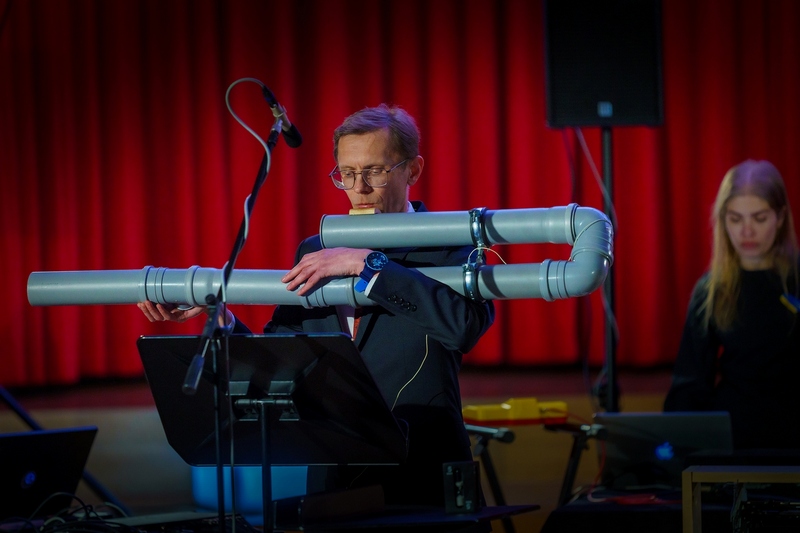
Udo Kasemets’ 1984 Yi Jing Jitterbug set up a fascinating interaction between flautist Tarmo Johannes – wielding, among other things, a vast contrabass flute constructed from pieces of drainpipe – and an octet of tape recorders. Johannes’ series of performances, each limited by the duration of an egg timer, were recorded and played back into the space, evidently lightly filtered and / or processed, a back-and-forth creating a dronal, meditative environment (due in part to the machines recording capturing those playing back) coloured by an underlying sense of instability. It was deeply immersive, the ear constantly being pulled between individual elements and the combined total effect.
Over the last few years i’ve really come to adore EMA concerts, which are akin to an Estonian “Radiophonic Workshop”. The sharp formal suits they wear are deliberately at odds with the playful, mischievous nature of their performances, nowhere more hilariously demonstrated than in the ensemble’s arrangement of Rauno Remme’s miniature acousmatic piece Altes Kind, transformed into a bizarre quartet of vocal weirdness – the players each holding microphones like avant-garde crooners – electronic stings and, at its very end, some cheeky slide whistle antics.
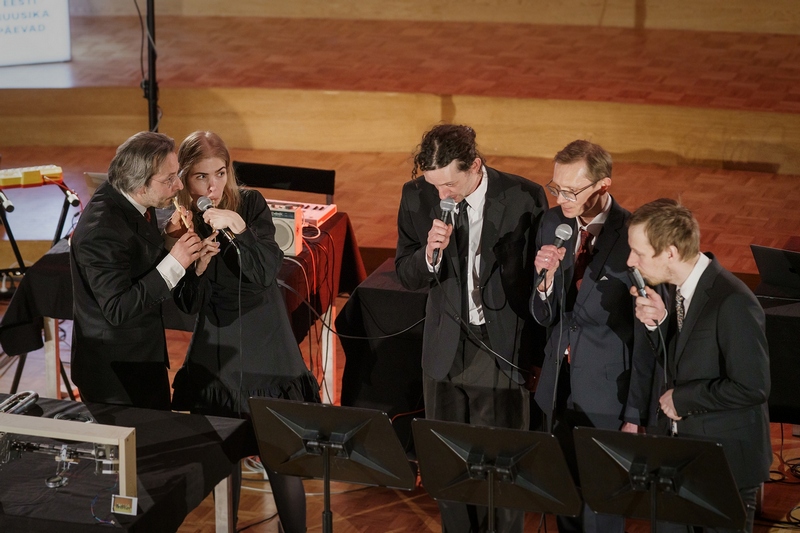
EMA’s performance had a counterpart in the debut concert given by The Bright Future Ensemble, a new group comprising kannel, recorders, harpsichord and electronics. Just as their instruments integrated old and new, so did their choice of repertoire, featuring a mixture of early, Baroque and contemporary music. The highlight of the earlier music was unquestionable the Ciaconne by David Kellner, a German composer contemporary with Bach who spent some of his life living in Estonia. Originally composed for lute, the Ciaconne was elaborated by Anna-Liisa Eller and Taavi Kerikmäe as a duet for kannel and clavichord. It was engrossing and surprisingly moving, the music seemingly caressed by each player, passed between them, like a cross between a conversation and a dance, each taking turns to lead, offering alternate options on how to articulate the music next.

Several light years away from such intimate music as this was Britta Byström’s Off on a Comet – which Byström mentioned she was working on in my Proms pre-première questions last year – receiving its world première (we heard the first five of its planned 11 movements). A work for alto recorder, kannel, harpsichord and synthesizer / theremin, the piece is inspired by the eponymous novel by Jules Verne, making the members of the ensemble a group of people carried away by a comet after it strikes a glancing blow against the Earth. Byström’s music didn’t so much convey a detailed narrative as present a more relaxed suggestion of the accidental astronauts’ subsequent (mis)adventures. In the opening sequence Dan Laurin’s recorder was surrounded by a mandorla of floating sound and imitative textures. A shining music that plunged in and out of turbulence, at its close it sagged in a warm, comfortable way, like reclining after a long, arduous hike. The piece subsequently settled into a slow pulse, each beat either plain or embellished by the kannel and Anna Paradiso’s harpsichord, developing into a beautiful duet between recorder and theremin. The work’s conclusion was like a gentle alien dance, peppered with birdsong-like phrases.
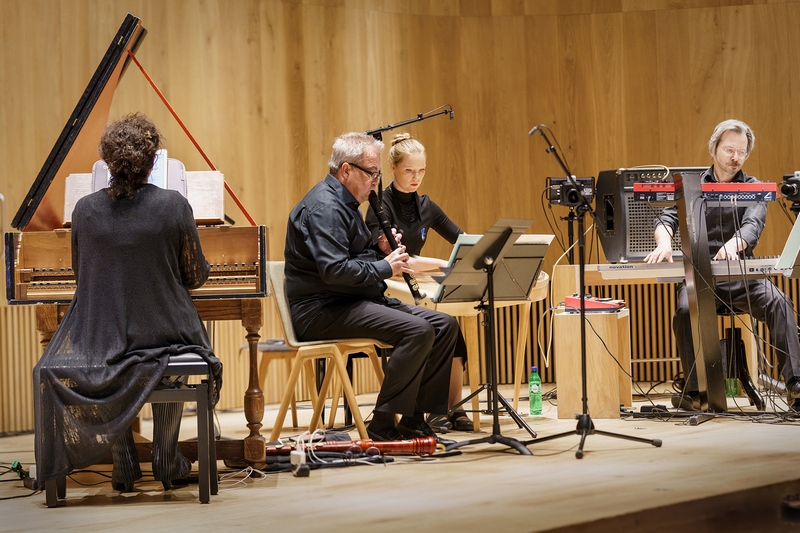
The most ambitious new work in the concert was Helena Tulve’s Was It Light?, also receiving its first performance. Composed in 2019, before the pandemic and all that has happened since, the piece is a response to what Tulve describes as “something restless and even menacing in the air”. Yet her intention is to challenge this ominous apprehension with words of encouragement from Theodore Roethke, from which the work gets its title.
Tulve excels at exploring powerful darkness (heard to overwhelming effect in her piece Lament, featured recently in my Lent Series), and it was this that dominated the first of the work’s five sections. Rumble everywhere, within which faint traces of something could just about be glimpsed, an effect slightly marred by the ensemble softly whispering “was it light?”; i couldn’t help feeling the impact would have been greater had the words not been included (they don’t feature at all in the remainder of the piece). The second part contrasted with this, exploring a counterpoint of embellishment, a network of trills rendered as beat shimmer in the electronics, with a slow recorder melody just about projecting through. Part three developed everything from before, with more rumble appearing and a new decorative contrapuntal texture; it was especially fascinating when the recorder dropped out, revealing a mysterious place of seemingly secondary ideas yet if anything that only made the music more riveting, until eventually being cancelled by soft noise.
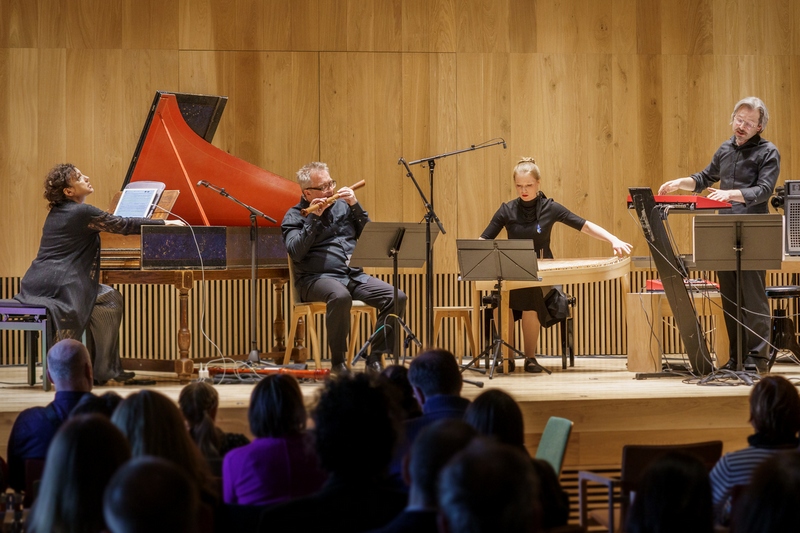
The fourth part withdrew, becoming subdued with faint noise constantly audible behind the players. There were signs of the uncanny or transcendent in the work’s closing section, primitive bleeping electronics – hitherto unheard – emerging from nowhere and speaking as an outer or, in this context, ‘supernatural’ presence. Their role galvanised the rest of the ensemble, instigating a busy tutti filled with a mixture of imitation and sustained tones. In the wake of this intervention, it was impossible not to read the music’s final dying away as having been touched by an optimistic force, pointing ahead towards, perhaps more waiting and stillness, but ultimately, the possibility of something positive.
Both the EMA and the Bright Future Ensemble concerts are available (for a small fee) to stream as video, via the festival’s EMP TV service; the EMA concert can also be streamed free as audio from the Klassikaraadio website. Links below:
EMA: audio / video
The Bright Future Ensemble: video

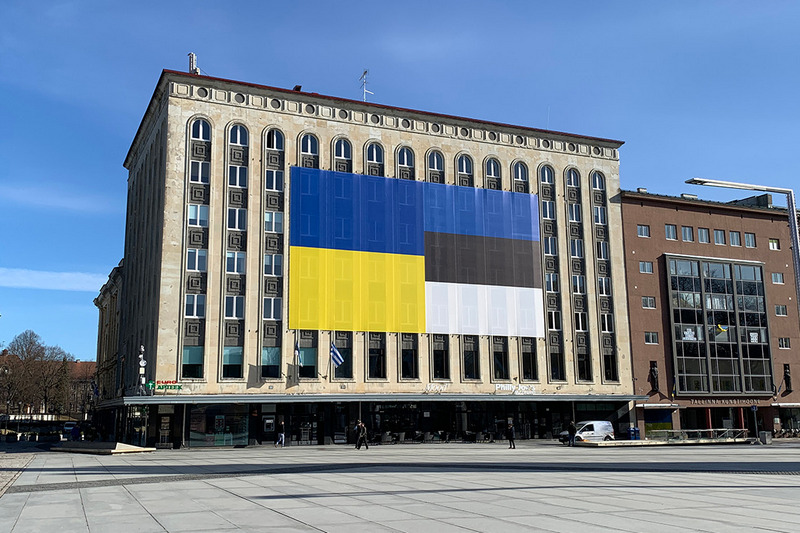
[…] Johannes had performed Udo Kasemets’ 1984 “solo octet” piece Yi Jing Jitterbug on a drainpipe contrabass flute, expanded by a collection of tape machines. On this occasion – after a lengthy silent process of […]